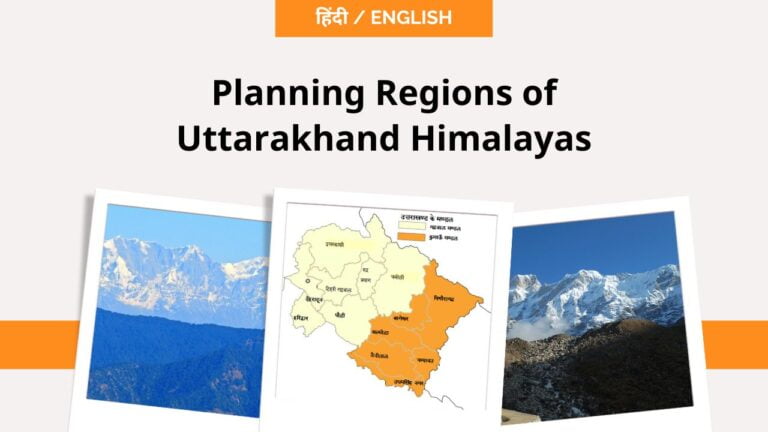Survey Techniques in Field Study
Regional Planning & Development
Index
Introduction
Field studies are research methods used to gather information and data directly from the field or natural setting. Surveys are one of the most commonly used techniques in field studies, allowing researchers to collect data from a large number of participants efficiently. There are different survey techniques used in field studies. Some of them are as follows:
Questionnaires:
Questionnaires are a popular survey technique that involves the use of structured sets of questions. They can be administered in various formats, such as paper-based or online. Questionnaires allow researchers to collect both qualitative and quantitative data by asking participants to respond to specific questions related to their experiences, opinions or behaviours. Closed-ended questions with predefined response options are commonly used to facilitate data analysis, but open-ended questions can also be included to gather detailed qualitative insights.
Interviews:
Interviews are another common survey technique used in field studies. Unlike questionnaires, interviews involve direct interaction between the researcher and the participant. This technique allows for more in-depth exploration of topics and the opportunity to clarify responses. Structured interviews use a predefined set of questions, while semi-structured or unstructured interviews provide more flexibility to adapt the questions based on the participant's responses. Interviews can be conducted face-to-face, via telephone, or through video conferencing.
Focus Group Study:
Focus groups involve bringing together a small group of individuals to discuss specific topics of interest. This survey technique fosters group dynamics and encourages participants to express their opinions, share experiences and engage in discussions with one another. Focus groups are particularly useful for exploring complex social interactions, attitudes and behaviours. A skilled moderator guides the discussion, ensuring that all participants have an opportunity to contribute. The session is often audio or video recorded for later analysis.
Observational Surveys:
Observational surveys involve systematically observing and recording behaviours or phenomena in their natural setting. This technique is particularly useful for studying behaviours that may be difficult to capture through self-report methods. Observational surveys can be conducted using direct observation, where the researcher physically observes and records behaviours or indirect observation, where the researcher uses technology (e.g., cameras or sensors) to collect data remotely. Observational surveys require careful planning, standardized data collection procedures and appropriate ethics considerations.
Ecological Momentary Assessment (EMA):
EMA involves collecting data from participants in real-time and in their natural environment. Participants are typically equipped with electronic devices (e.g., smartphones or wearables) that prompt them to respond to questions or complete assessments at specific intervals or in response to specific events. EMA allows researchers to capture momentary experiences, behaviours or contexts, reducing the reliance on retrospective recall. It provides a more ecologically valid understanding of participants' experiences.
Online Surveys:
With the widespread availability of the internet, online surveys have gained popularity in field studies. Online surveys can reach a large and diverse population, offering convenience and anonymity to participants. Researchers can use various online platforms or survey software to design and distribute surveys. Online surveys can include a combination of question types and data can be automatically collected, tabulated and analysed. However, researchers need to consider potential biases associated with online recruitment and ensure data security and privacy.
Mobile Surveys:
Mobile surveys leverage the ubiquity of mobile devices to collect data in real-time and location-specific contexts. Participants can respond to survey questions using their smartphones or tablets. Mobile surveys can utilize various data collection methods, such as GPS tracking, audio or video recording or multimedia content. This technique enables researchers to gather rich data on participants' behaviours, experiences and environmental factors.
Conclusion :
In conclusion, field studies employ a variety of survey techniques to collect data directly from the field or natural setting. Questionnaires, interviews, focus groups, observational surveys, ecological momentary assessment, online surveys and mobile surveys are all valuable tools in a field study.
Share
Related Topics
Survey Techniques and Field Study
Other Topics
Unit - II







